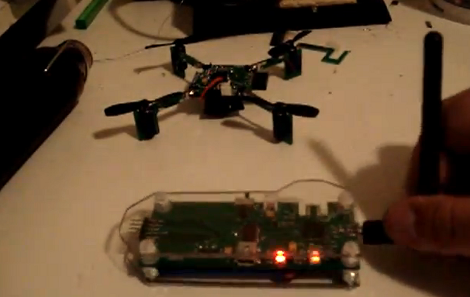For a final design project, [Frank] and his group took on an augmented reality project. The goal was to make objects interactively controllable by pointing a smartphone at them. Their solution was Augmented Reality Universal Controller and Identifier (ARUCI).
The system locates controllable objects by sensing IR beacons that contain identifiers for each object. The IR is received by a Wiimote sensor, which has been integrated into a custom PCB. This board sits in a 3D printed enclosure, and mounts to the back of a smartphone. The electronics are powered by tapping off of the phone’s battery.
Commands are sent to devices using a custom 2.4 GHz protocol which was implemented using the ATmega128RFA1. Each device has another ATmega to receive the signal and control the real world object. In their demo, the group shows the system controlling devices including a TV, a radio, and an RC car.
The system provides an interesting way to interact with objects, and the hardware integration is quite impressive. After the break, watch [Frank] give a demo.













